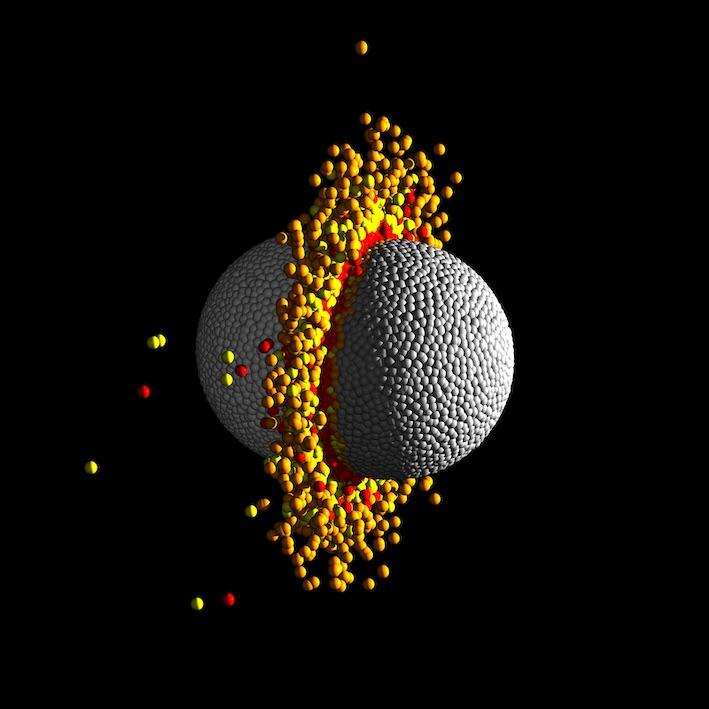Iron-rich planet formed after distant worlds’ high-speed collision
For the first time, evidence of an impact taking place between planets outside our Solar System has been found.

An international team of researchers, including experts from the Centre for Exoplanet Science, used a telescope in the Canary Islands to study a distant star system that contains four planets. They used a spectrograph to measure precise shifts in wavelengths of light, which enabled them to estimate the masses of the planets.
The researchers found that two of the planets are roughly the same size, but one is more than twice the mass of the other. This means the heavier planet – known as Kepler-107c – must have a much larger iron core. Their findings suggest Kepler-107c may once have been larger, but a high-speed collision with another planet stripped off part of its outer layer – called the mantle. They predict the planets were travelling at more than sixty kilometres per second at the time of impact. Kepler-107c’s iron core consequently makes up 70 per cent of its reduced mass, the team says. By contrast, the core of the lighter planet – Kepler-107b – accounts for 30 per cent of its mass.
Impacts between planets are thought to have happened during the early history of our Solar System. Previous research suggests that the Moon may have formed following a collision between Earth and a Mars-sized planet around 4.5 billion years ago.
Such collisions may occur in planetary systems across the galaxy but this is the first time they have found evidence of such an impact outside our Solar System.
Prof Ken Rice of the School of Physics and Astronomy who was involved in the study said:
"The diversity of planets found outside our Solar System is fascinating. We can use this diversity to better understand how planets form and evolve."
The research was led by scientists from Italy’s National Institute for Astrophysics, which operates the Telescopio Nazionale Galileo (TNG) on La Palma in the Carnary Islands where the observations were made. The International team also included researchers from the Universities of Bristol and St Andrews, and Queen's University Belfast.
The study, published in the journal Nature Astronomy, received funding from the Scottish Universities Physics Alliance.
Links:

